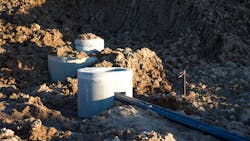EPA invites states to apply for $52M in stormwater infrastructure grants
The U.S. Environmental Protection Agency (EPA) has announced that $52 million in grants is available to help communities improve their stormwater infrastructure.
The funding is being made available through the agency’s Sewer Overflow and Stormwater Reuse Municipal Grants. These grants can be used by states to invest in projects that reduce flooding and help prevent contaminants from polluting waterways. The agency says that it is also now implementing new requirements under the Bipartisan Infrastructure Law to help states support projects in small and financially distressed communities.
EPA is inviting states to apply for the $52 million in available grant funding for stormwater projects in their local communities. This funding is available through annual agency appropriations. EPA will work with states to implement new requirements, created by the Bipartisan Infrastructure Law, that direct states to invest at least 25 percent of allotted funds in projects in small or financially distressed communities. The agency is enhancing flexibility related to non-Federal cost share, to remove a potential barrier from investing in these communities.
Brief directions on how to apply for the funds is available here.
This grant funding is in addition to $11.7 billion in funding from the Bipartisan Infrastructure Law that EPA is investing in the Clean Water State Revolving Funds to improve wastewater and stormwater infrastructure in communities across the country.
“With this grant funding, EPA is investing in stormwater systems that are aging and often overwhelmed by increased stress from the climate crisis,” says EPA Assistant Administrator for Water Radhika Fox. “Small and disadvantaged communities are often the most vulnerable to these climate impacts and challenges. EPA is committed to working with our state partners to ensure this funding reaches the communities that need it most.”
EPA’s Sewer Overflow and Stormwater Reuse Municipal Grants program addresses a significant source of water pollution and a public health concern. Stormwater can collect various pollutants including trash, chemicals, oils, and dirt/sediment and convey them to nearby waterways. When mixed with domestic and industrial wastewater in combined sewers, excess stormwater can also contribute to overflows of untreated sewage into our waterways during heavy storm events.
Managing stormwater remains a complex environmental challenge for communities across the country. The costs to construct, operate, and maintain stormwater infrastructure can be significant, which can be a strain on ratepayers, especially those in small and financially distressed communities.






